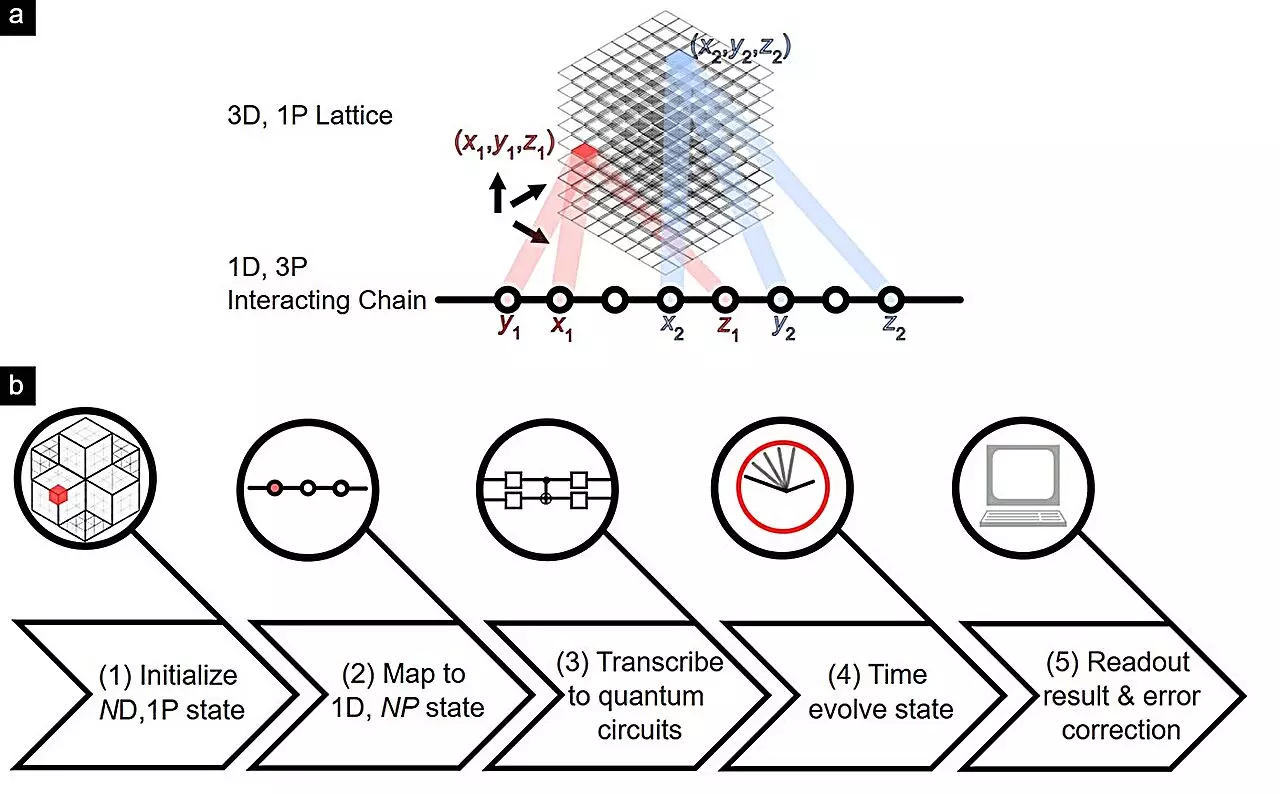Quantum computers have been making waves in the scientific community with their incredible potential to revolutionize various fields. In a recent breakthrough, researchers from the National University of Singapore (NUS) have successfully simulated higher-order topological (HOT) lattices with exceptional precision using digital quantum computers. These complex lattice structures hold immense promise in advancing our understanding of quantum materials and their applications in technology.
The Significance of Topological States of Matter
The study of topological states of matter, along with their HOT counterparts, has piqued the interest of physicists and engineers alike. Topological insulators, for example, exhibit unique properties where electricity can flow only on their surfaces or edges, while the interiors remain insulating. This phenomenon is made possible by the intricate mathematical properties of topology, allowing electrons to move along the edges without being disrupted by defects or deformations. Devices constructed from such topological materials show potential for more resilient transport and signal transmission technologies.
Led by NUS Assistant Professor Lee Ching Hua from the Department of Physics, the research team devised a scalable method to encode large, high-dimensional HOT lattices into simple spin chains within digital quantum computers. By harnessing the vast amounts of information storage capacity offered by quantum computing qubits, the researchers minimized the resources required for quantum computation in a noise-resistant manner. This breakthrough not only enables the simulation of advanced quantum materials but also opens up new avenues for topological material engineering.
Despite the constraints posed by current noisy intermediate-scale quantum (NISQ) devices, the team managed to achieve unparalleled precision in measuring the dynamics of topological states and protected mid-gap spectra of higher-order topological lattices. This feat was made possible through the implementation of advanced error mitigation techniques developed in-house. The success of this endeavor underscores the potential of digital quantum computers to explore novel frontiers in material engineering and quantum technologies.
The ability to simulate high-dimensional HOT lattices marks a significant milestone in the field of quantum materials and topological states. This advancement hints at a potential pathway towards realizing true quantum advantage in the future. By leveraging the capabilities of digital quantum computers, researchers can delve deeper into the intricacies of topological materials and unveil new possibilities for quantum technology applications.
The simulation of advanced quantum materials using digital quantum computers presents a promising avenue for scientific exploration and technological innovation. The breakthrough achieved by the research team at NUS highlights the transformative power of quantum computing in unraveling the mysteries of quantum materials and propelling us towards a future enriched with cutting-edge technologies.

